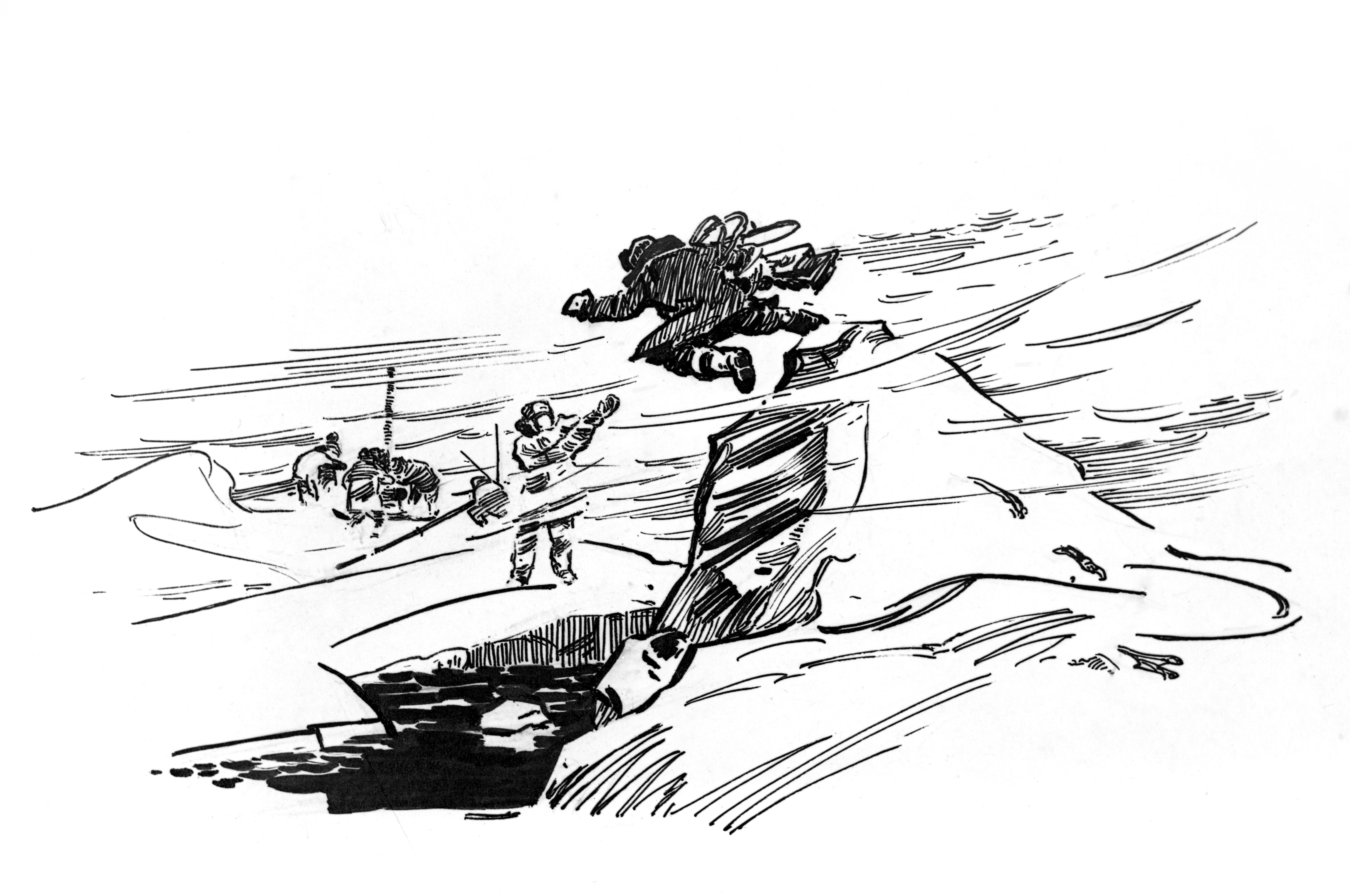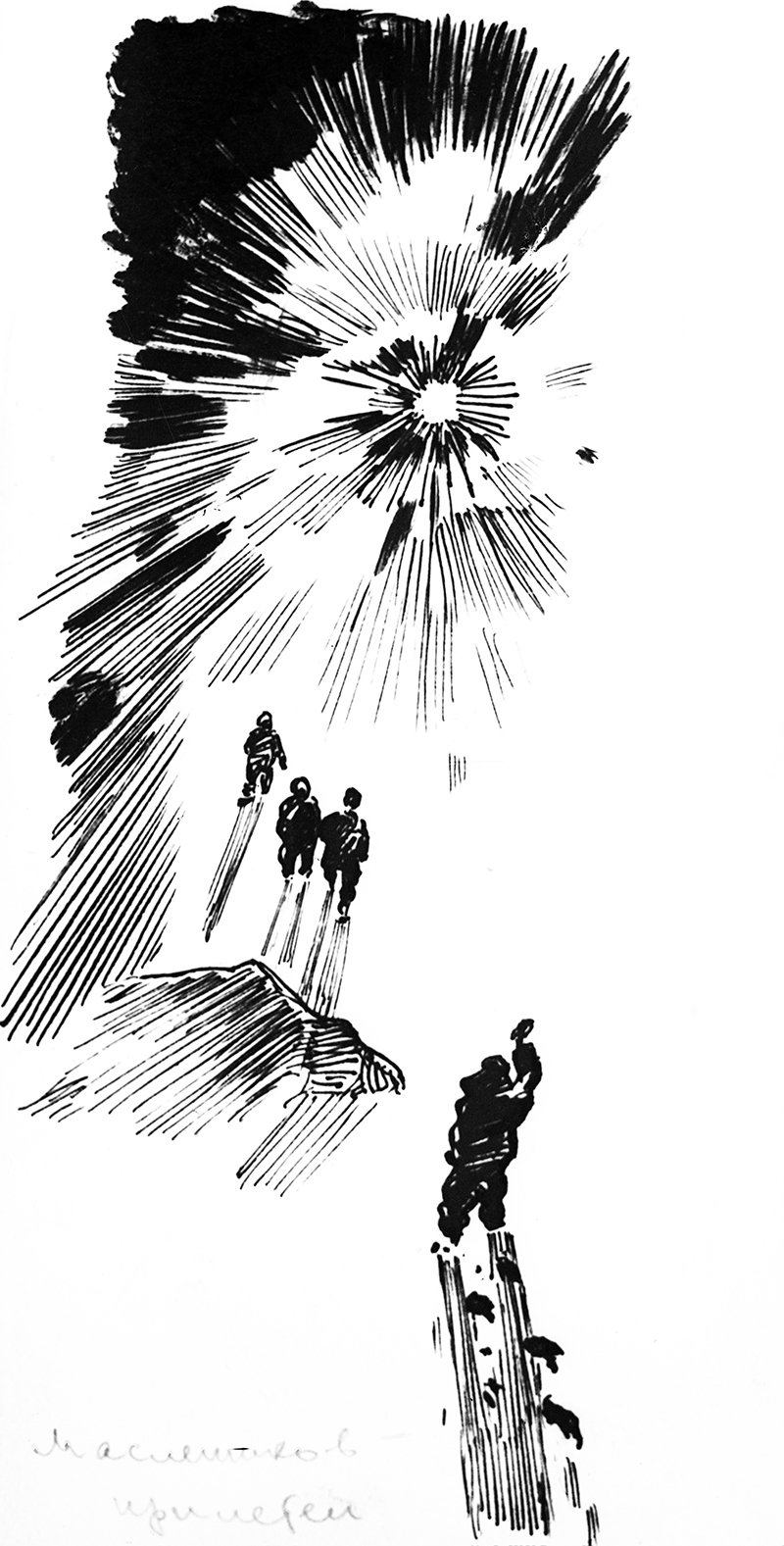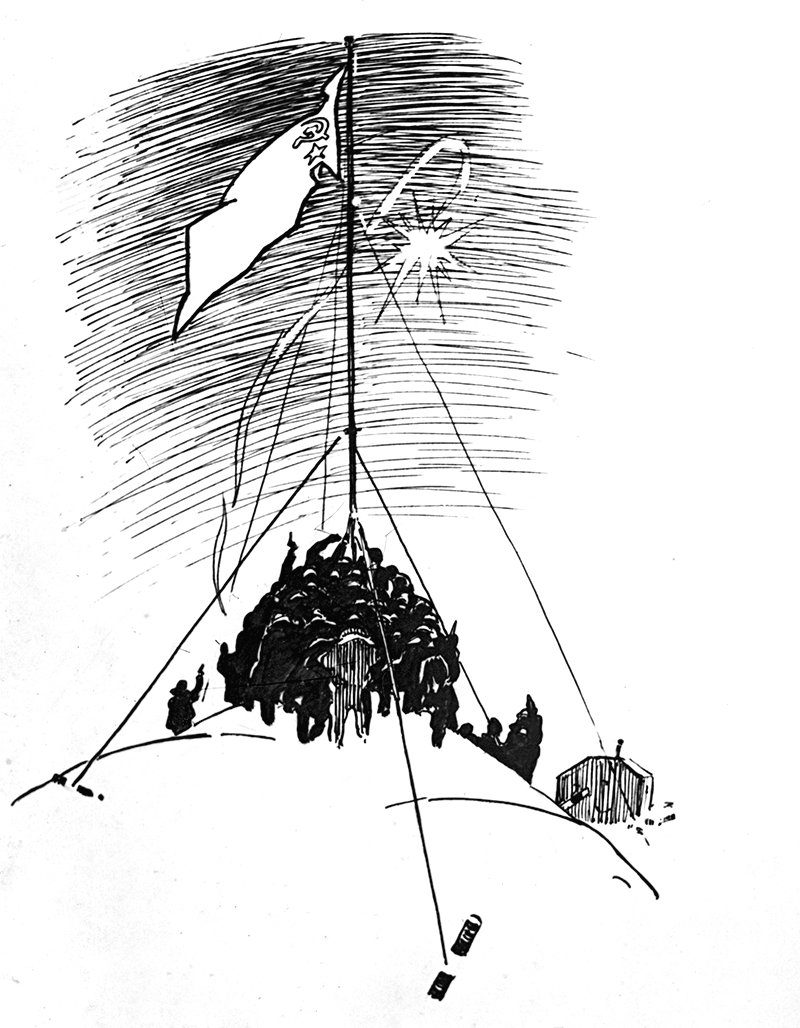June 1. This is the first day of summer. It is warm, and the temperature is just minus 1.5 degrees Celsius. There's bright sunshine. The An-2 plane is in Tiksi, and a routine service has been done. Its crew is unable to take off because of bad weather enroute.
June 5. Today is Saturday, and we have been taking a steam-bath. We had a fantastic time thrashing ourselves with oak-twigs. Our cook, Vladimir Zagorsky, treated us in the locker-room to a barrel of Kvass that he'd made from fermenting some of our brown bread. This reminded us of the famous Sanduny steam-baths in Moscow. We splashed around in cold water after thrashing ourselves, and any tiredness that we'd had simply disappeared. An Arctic steam-bath is the ultimate must-have.
There were no jobs today that we had to be in a hurry to get done. We watched the movie Carnival Night for the third time after our supper. We have watched all the movies several times now, but our movie theater is always chockablock.
The ice-floe is drifting slowly due north.
June 15. Askold Shilov switched on the radio transceiver an hour earlier than usual. We heard a TASS report that Vostok-5 had lifted off with Cosmonaut Valery Bykovsky onboard. It's such a pity that we won't be able to glimpse his spaceship flying in lower latitudes.
June 16. The Sun is out, and the clouds have scattered at long last. We have calculated our coordinates: 81 degrees 46 minutes Northern Latitude and 149 degrees 11 minutes Eastern Longitude. Everyone is trying to work outdoors. The doctor is building a grocery shelf using boards from dissembled boxes. Zayats and Ostroglyadov are taking advantage of the mild weather and are checking and adjusting actinometric instruments. Radio transceiver operators are sprinkling sawdust around the foundations of the radio masts in order to prevent them from melting away. Ionosphere experts are piling up firewood for the stove. Empty food boxes are thawing out near their place. Dry finely chopped planks are really good for firewood. All of us have unanimously changed our work schedule.
June 17. The first woman, Valentina Tereshkova, is flying in outer space. This is great. Good girl, Valentina. Lively discussions about the news are ongoing.
The radio transceiver is broadcasting 24 hours a day. We are waiting for news that our cosmonauts have landed safely. We suggest that the An-2's commander, a bachelor named Vladimir Vitushkin, send her a telegram into space and propose to Tereshkova
June 28. Aviators worked all day long at the airfield, diverted water, drilled ice-holes and filled in meltwater puddles with pieces of ice from hummocks. The thaw also affected our store-rooms. We put everything back in its place and secured everything with ropes. The ice-floe is moving northward, and we have crossed the 82nd Parallel. Eighty centimeters of ice have melted away at the camp in a month.
July 3. It is raining. Large raindrops are pattering on house roofs, and meltwater puddles are filled with bubbles. The irrigation system is functioning smoothly, all the water is heading toward ice-holes via ducts and spills on into the ocean.
July 9. It's the same old weather as usual at the station, only we’ve landed up with drizzle instead of fog, and the temperature is hovering around zero degrees. We have moved ten kilometers northwest in the first nine days of July along a straight line. The base reports that a herd of white whales was sighted in a patch of ice-free water near the camp. No one shows up near our ice-floe, but polar bears, the masters of the Arctic, frequented the station during the first shift. Even a walrus managed to crawl out from an ice-hole and caused a lot of trouble inside the hydrologists’ tent when the ice-floe was located not far from the mainland in the East Siberian Sea.
July 17. The Sun is shining. Everything is quiet, and the temperature has reached plus 4.1 degrees Celsius, an all-time high during the summer season. The doctor is telling everyone to sunbathe, so all the off-duty personnel are basking in the Sun. Our photographers are having such fun: The hummocks near the dwellings are reflected in the blue mirror-like meltwater puddles. So, it will be possible to take some amazing pictures.
July 27. Ionosphere expert Konstantin Borisov steals the show after on-duty radio transceiver operator Leonid Vasilyev gives him a telegram that his son has, at long last, been born. We opened a bottle of champagne from our stocks, and Zagorsky baked a cake for the occasion
July 28. We are marking Navy Day and have changed our flag in an impressive setting. We attached a new two-meter hammer-and-sickle flag to the flagpole and hoisted it up, shooting our carbines three times. The transformed station became festive-looking. After the flag-hoisting ceremony, we organized target shooting competitions, with the participants using carbines to hit targets 50 and 100 meters away. Fyodor Zayats, a veteran of the Great Patriotic War, became the absolute champion. At an informal dinner, the winner received a prize, namely, a book with the competitors’ autographs and the station's coordinates.




